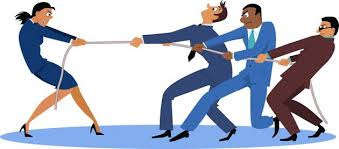Women in India represent 29 percent of the labour
force, down from 35 percent in 2004. More than half of the work done by
women in India is unpaid, and almost all of it is informal and
unprotected. Women are not well represented in most sectors, including
business leaders. Though they comprise almost 40 percent of agricultural
labour, they control only 9 percent of land in India. Women are also
shut out of the formal financial system. Nearly half of India’s women do
not have a bank or savings accounts for their own use, and 60 percent
of women have no valuable assets to their name. It is unsurprising then
that at 17 percent, India has a lower share of women’s contribution to
the GDP than the global average of 37 percent. In addition, women face
great physical insecurity. The rate of crimes against women in India
stands at 53.9 percent in India. In Delhi, the capital city, 92 percent
of women reported having experienced sexual or physical violence in
public spaces.
The Opportunity
The economic impact of achieving gender equality in India is estimated to be US$700 billion of added GDP by 2025. The IMF estimates that equal participation of women in the workforce will increase India’s GDP by 27 percent. More than half of India’s women don’t have cellphones, and 80 percent don’t use them to connect them to the internet. If as many women as men had phones, it could create US$17 billion in revenue for phone companies in the next 5 years. Globally, women make or influence 80 percent of buying decisions and control US$20 trillion in spending. There are also social benefits to empowering women. Women spend 90 percent of their income on their families, and economically empowered women boost demand, have healthier and better-educated children, and raise human development levels. One in three private sector leaders reported that profits increased as a result of efforts to empower women in emerging markets.
The economic impact of achieving gender equality in India is estimated to be US$700 billion of added GDP by 2025. The IMF estimates that equal participation of women in the workforce will increase India’s GDP by 27 percent. More than half of India’s women don’t have cellphones, and 80 percent don’t use them to connect them to the internet. If as many women as men had phones, it could create US$17 billion in revenue for phone companies in the next 5 years. Globally, women make or influence 80 percent of buying decisions and control US$20 trillion in spending. There are also social benefits to empowering women. Women spend 90 percent of their income on their families, and economically empowered women boost demand, have healthier and better-educated children, and raise human development levels. One in three private sector leaders reported that profits increased as a result of efforts to empower women in emerging markets.
The Government of India’s MUDRA scheme to support
micro and small enterprises and direct benefit transfers under the Jan
Dhan Yojana seeks to empower women. Women entrepreneurs account for
about 78 percent of the total number of borrowers under MUDRA.
Potential Areas of Focus
The private sector and business community will be
crucial in helping bridge the gap between skills and jobs and enable
access to decent work for women. Vocational and technical training, life
skills and financial literacy programmes for women to help them develop
marketable skills and better decision-making abilities cannot be
undertaken in a meaningful way without the involvement of industry.
Companies can also invest in women entrepreneurs through microfinance,
and bring their goods and services into supply chains. Enhancing women’s
access to the internet and ICT can create a merging market of connected
women who can be linked to business opportunities. In addition, as
employers, the private sector can invest in women’s security against
violence at home and in public spaces, and take steps to ensure their
mobility through inclusive transport.
UNIBF Activities
- At its second meeting, participants agreed that increasing women’s participation in the workforce would have a direct, positive impact on productivity and profitability. A consensus developed that gender equality in the workforce is now a business imperative.
- UN Women highlighted the Women’s Empowerment Principles (WEPs). Among these was the Gaps Analysis Tool, an easy way to benchmark where an organisation stands in terms of gender equality and take corrective steps.
- Best practices within the industry were shared to leverage existing platforms to educate the industry on the benefits of gender equality in the workforce and identify role models to “grow the tribe”.
- The group agreed on the following next steps:
- Encourage more CEOs to pledge their support towards gender equality.
- Identify mentors who can lead other organisations in their sector to adopt gender equal policies
- Create ways to increase brand/ PR value for organisations that encourage women in their workforce
- Enable cross pollination of best practices by:
- Leveraging existing platforms and content
- Identifying role models
- Storytelling
- Sharing success stories and policies





